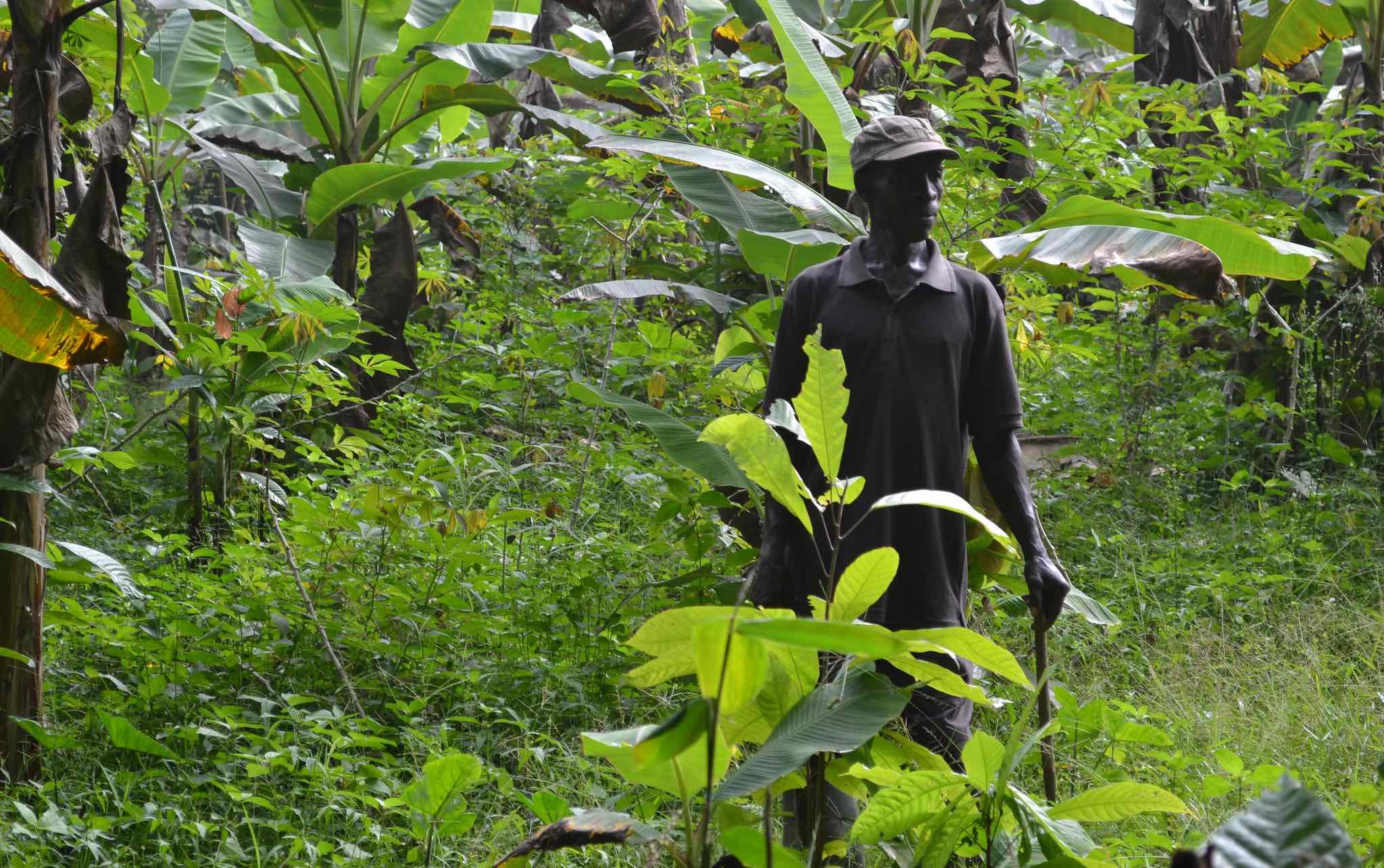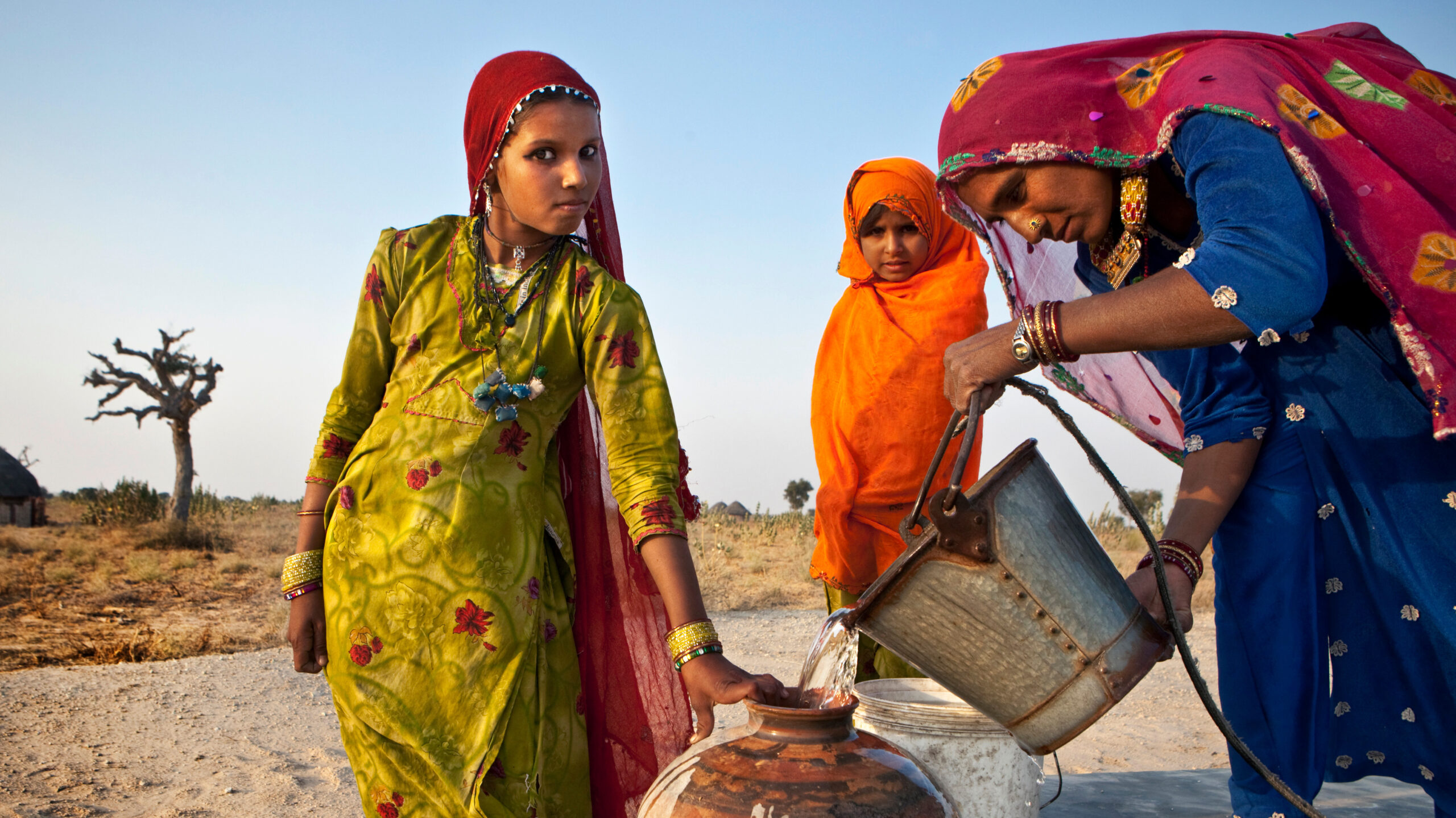Cocoa bean prices have been rising since the last quarter of 2023, hitting a record high of $10.97 per kilogram on April 19 (Figure 1). The price spike is due to a significant drop in bean production by major global suppliers—four key producing nations in West and Central Africa account for more than 60% of the world’s supply of cocoa beans: Cote d’Ivoire (with 38% of the global production in 2022), Ghana (19%), Nigeria (5%), and Cameroon (5%).1
The current price spike was triggered by intertwined effects of climate change and El Niño, which led to erratic rainfall and higher temperatures in cocoa-growing regions, encouraging the proliferation of cocoa tree pests and diseases such as black pod disease and cocoa swollen shoot virus disease (CSSVD). Collectively, these climate-induced shocks have substantially reduced yields.
Figure 1
Structural issues such as aging trees are another source of tight supplies. In general, cocoa trees receive little long-term investment or management from farmers. In many cocoa-growing regions, there is little replanting taking place, given the low-income trap that cocoa farmers find themselves in, receiving only a small share of the high value of cocoa-based products. One other factor limiting the supply of cocoa beans in Ghana is a shift in land use to artisanal mining of gold and other minerals. There is growing evidence that farmers are renting out their cocoa fields for small-scale mining operations, which compete for land and labor with cocoa production.
What do rising prices mean for smallholders?
The surging cocoa prices have heterogeneous implications for smallholders in the four major producing countries because different degrees of price regulation determine the transmission of international prices to farmers: Cote d’Ivoire and Ghana operate price-setting systems, while the market is liberalized in Cameroon and Nigeria.
Due to the price-setting regulations, farmers in Cote d’Ivoire and Ghana did not see benefits as prices rose and yields fell. Cote d’Ivoire farmers threatened to strike in response; in April President Alassane Ouattara announced a 50% increase in the farm gate price. Ghana followed suit shortly after with a similar price hike. While price controls are meant to protect producers when international prices are too low, farmers likely don’t perceive that advantage in the current situation, especially with more profitable ventures such as illegal mining available, coupled with the dwindling production levels of cocoa beans.
On the other hand, farmers in Cameroon and Nigeria are seeing high prices and are generally satisfied with cocoa production. This is due to market liberalization in these countries, where prices fluctuate depending on international market conditions. Farmers sell their cocoa beans either to local processing plants or commodity trading houses, which then export the pods to European Union countries including the Netherlands, Germany, France, and Belgium, as well as others including the United States, Malaysia, and Indonesia.
Using Cameroon as an example, Figure 2 shows the farm gate price from some key commodity trading houses as well as the FOB (Free on Board) and CIF (Cost, Insurance, and Freight) prices.
Figure 2
Farm gate prices in Cameroon have been increasing on nearly a daily basis in recent months—tripling since September 2023—due to the supply reductions from Cote d’Ivoire and Ghana; Cameroon’s Minister of Trade celebrated these strides in cocoa prices. The CIF and FOB are also high, implying significant benefits for the key cocoa trading houses. Farmers in Cameroon are receiving an average farm gate price of about $9.70/kg of cocoa bean as of April 30.
How are governments responding?
After heavy rains affected cocoa farms in Cote d’Ivoire, the government was quick to halt the selling of contracts for cocoa exports for the 2023/2024 season. This moratorium was not only a blow to foreign reserves, it also affects key commodity cocoa trading firms such as Cargill, Barry Callebaut, Nestlé, and Hershey.
Then, amid farmer rumblings, the president issued his April 2 order raising farm gate prices 50%—from FCFA 1000/kg ($1.71/kg) to FCFA 1500/kg ($2.57/kg)—as of April 2. In Ghana, the government increased producer prices by 58.26%, up from GH¢20.93/kg ($4.70/kg) to GH¢33.12/kg ($7.61/kg) for the rest of the 2023/24 cocoa season as of April 5.
Way out and next steps
The Ghana Cocoa Board has launched an effort to rehabilitate cocoa plantations infested with CSSVD—part of the Tree Crops Development Project, a $227.50 million (of which $200 million is financed by the World Bank) project which also covers cashew, coconut, and rubber value chains. However, the rehabilitation project is not expected to increase yields in the short run, as replanted trees could take two to four years to mature and yield beans.
Short-term measures to increase cocoa production amid weather shocks and crop pests and diseases include climate-smart agriculture (CSA) practices such as the use of shades (shade trees), irrigation, crop diversification, and climate-resilient seedlings. CSA offers the triple wins of increasing agricultural productivity, reducing the emission of greenhouse gases, and building climate resilience. These practices already widely used by farmers in the region, offer potentially significant productivity and livelihood gains. For instance, crop diversification, which takes the form of agroforestry, increases smallholder livelihoods and welfare while improving food and nutrition security through the cultivation of food crops.
Ironically, these soaring prices coincided with the World Cocoa Conference, April 21-24 in Brussels, with the theme “Paying More for a Sustainable Cocoa.” They also come amid the rollout of the EU Regulation on Deforestation-Free Products (EUDR) barring trade in commodities from recently-deforested or degraded lands. The EUDR initially took effect in June 2023 and will become applicable to commodity trading houses doing business with the EU in December 2024. Since most of West Africa’s cocoa goes to the EU, these countries will have to develop transparent and traceable systems to demonstrate that their exported cocoa beans are not tied to deforestation post-December 2020.
Martin Paul Jr. Tabe-Ojong is a Young Professional Economist with the Agriculture and Food Global Practice of the World Bank Group and a former Associate Research Fellow at IFPRI; Onasis Tharcisse Adetumi Guedegbe is an Agricultural Economist with the Agriculture and Food Global Practice of the World Bank Group based in Washington DC. Joseph Glauber is a Senior Research Fellow with IFPRI's Markets, Trade, and Institutions (MTI) Unit. Opinions are the authors'.
1. FAO data. 2022 is the last year available. Accessed April 8, 2024.







